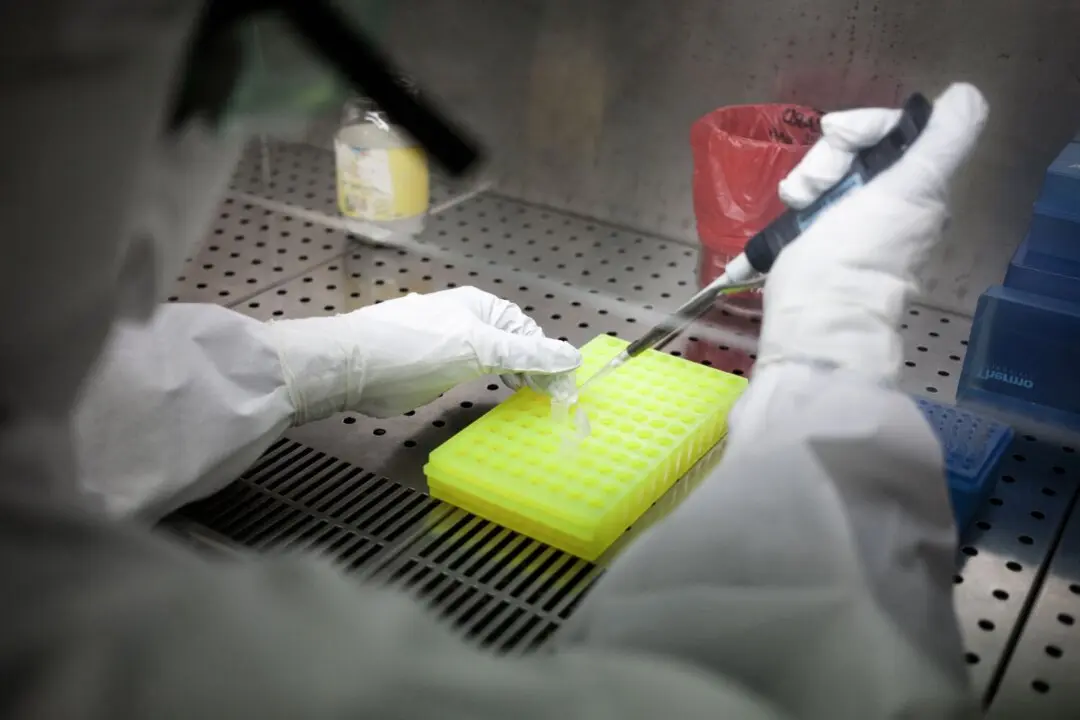A Chinese military-linked scientist who previously worked at Canada’s top biosafety laboratory has been involved in the engineering of a virus to replicate Ebola for conducting research in lower biosafety facilities.
Researching deadly viruses in lower safety conditions in China’s laboratories has been among the points of concern raised by scientists in relation to the COVID-19 pandemic.
The scientists created a new recombinant vesicular stomatitis virus by using Ebola virus glycoprotein, with the stated purpose of needing to research Ebola countermeasures in a biosafety level-2 (BSL-2) facility. Lethal viruses like Ebola can only be studied under biosafety level-4 conditions.
The virus created by the Chinese scientists resulted in the death of all healthy hamsters used in their experiment.
Researchers wrote the hamsters developed multi-organ failure, an eye inflammation called uveitis, and “severe systemic diseases resembling symptoms of human [Ebola] patients.”
Dr. Richard H. Ebright, professor of chemistry and chemical biology at Rutgers University, says a lab leak of the new Chinese-made Ebola-like virus would be “unlikely” to pose a threat to human health, but that further verification is needed due to the safety risks present.
In a statement provided to the media including The Epoch Times, Dr. Ebright said it’s “imperative to verify that the novel chimeric virus does not infect and replicate in human cells, and does not pose risk of infectivity, transmissibility, and pathogenicity in humans, before proceeding with studies at biosafety level 2.”
“I’m afraid that it may be way too late to find much out but it should be attempted, including the bsl2 and bsl3 labs where I suspect the risk for accidental release is greater,” James LeDuc, a former director at the Galveston National Laboratory, wrote to David Franz, a former commander of the U.S. Army Medical Research Institute of Infectious Diseases, in May 2021 regarding a letter published in Science magazine calling for the investigation of SARS-CoV-2 origins.
Ebola Strains
In the latest study, the Chinese scientists generated a recombinant vesicular stomatitis virus by replacing its glycoprotein (GP) with full-length glycoproteins from two strains of Ebola, Mayinga and Sudan Gulu, and Lassa virus.Dr. Ebright says the glycoprotein is the “protein that determines the species selectivity of infection by Ebola virus, the efficiency of infection by Ebola virus, and the susceptibility to immune response of Ebola virus.”
The Public Health Agency of Canada (PHAC), which oversees the Winnipeg lab, told The Epoch Times the pathogens it shipped to China were not used to support the Chinese experiments.
Spokesperson Mark Johnson says the type of work performed “does not use live virus but rather genetic information in order to accomplish the experiment,” with the genetic sequence data being publicly available through the Genbank website.
Winnipeg Lab
Yan Feihu previously worked at the NML in Winnipeg while being affiliated with the Chinese Academy of Military Medical Science. Mr. Johnson says that according to PHAC records, no other author on the recent Chinese study visited the NML.While PHAC had known of security issues with Ms. Qiu and Mr. Cheng since at least August 2018, it nevertheless authorized the shipment of Ebola and Nipah strains to China.
Ms. Qiu facilitated the shipment of Ebola and Nipah virus strains to the Wuhan Institute of Virology (WIV). The Wuhan BSL-4 lab didn’t have the deadly pathogens in its possession at the time and requested them from the NML.
Around the same time the viruses were shipped in the spring of 2019, government records show Ms. Qiu was put in charge of “Overall Planning” for a WIV project involving the use of reverse genetics to create synthetic virus strains.
A few months later, Wuhan became the epicentre of the pandemic with the spread of a bat coronavirus. Bat coronaviruses have been studied extensively in Wuhan labs.







